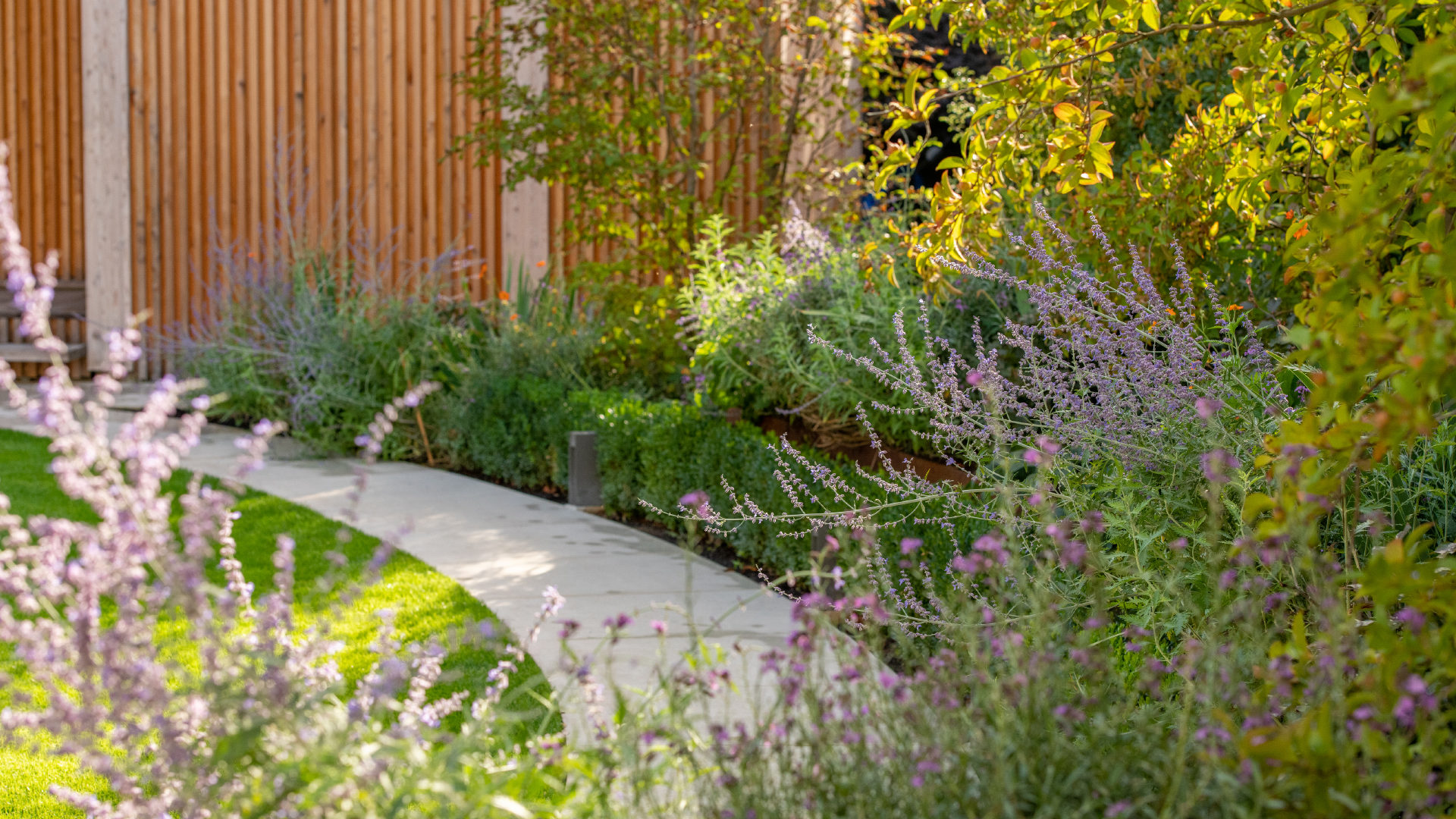
Wondering how garden design will change in 2021? Our Design Director, James Smith, reveals the 5 emerging trends we can expect to see in garden design in the new year…
TREND 1: HOME IS WHERE THE HEART IS
Over the past year we’ve all been forced to spend more time at home, thanks to Covid 19 – and this time has really focussed our attention on our gardens. Many have realised how precious those outdoor rooms are, and increasingly many are looking to upgrade and re-design their spaces to better suit themselves and their families.
Mental health, comfort and stimulation lies at the heart of this, and gardens will need to become more multi-faceted in 2021. Not only do they need to be relaxing spaces where you can watch seasonal change, but they need to provide space to exercise, garden, and even entertain in small groups. You can expect to see gardens designed similar to an interior space – with comfy multi-functional furniture, lighting, heating and perhaps even the odd chin-up bar, play area or outdoor kitchen.
TREND 2: PROTECTING THE PLANET
David Attenborough’s ‘A Life On Our Planet’ brings sharply into focus the problems we face on Earth, both now and in the coming decades. It’s vitally important that we all look to change our mindset, and garden design is a part of this. Rewilding in gardens has long been a design trend, but one that is set to increase in the coming year – whether it’s creating no-mow areas, establishing wildflower meadows, or simply planting to increase local biodiversity.
However, as designers we will need to go one step further. When specifying and procuring materials for our projects, we will need to use the most sustainable options available. Expect to see designers paying much more attention to this and educating their clients on the different options. Long gone are the days when we quickly throw away old materials – we now need to look at how best to recycle them on site, in order to reduce the carbon footprint of our work.
TREND 3: WORKING WITH THE LAND
Although garden design is about re-creating an outdoor space, it doesn’t mean you can’t work with what’s already there – namely the earth. Sculpting gardens with existing soil and sub-soils has and will become ever more popular, as exporting excess materials is now very expensive.
There’s also an environmental benefit to keeping and re-using as much material as possible, unless it’s contaminated. Expect to see more land sculpting and land art in garden projects in 2021, as designers look at creative ways to re-use material.
TREND 4: COMMERCIAL GREENING
The commercial landscape is changing – with fewer people commuting and more people working from home now. Businesses, developers and building owners will need to re-focus their offering in 2021, in order to entice employees back to the office. Many are investing in green spaces around their buildings and in communal areas, to create a high quality biophilic environment at the workplace.
Gardens and plants have been proven to help people relax and feel at ease. By designing green spaces such as external terraces, employees will have the opportunity to enjoy some fresh air, hold meetings and spend their lunch breaks away from their desks. Expect to see more ‘walk and talk’ routes around office buildings, urban farming and high quality roof environments to help employee motivation. Some offices are going one step further and introducing outdoor leisure activities for staff, such as spaces for yoga, table tennis and even mini golf.
TREND 5: A WORKING GARDEN
Increased working from home is set to become a permanent arrangement for some, and garden studio workspaces are set to grow in popularity in the coming year. This in turn leads to holistic thinking about how they can be integrated within the garden setting, set to be a key design issue in 2021.
Aside from work, we’re all more mindful about how we can become more self-sufficient, which grew from the lockdown period when supplies of food and essentials became restricted. Many have since experimented with home-grown produce – whether in small pots or in a greenhouse, and often with the assistance of younger family members to help nurture the plants. Expect to see an increasing demand for vegetable patches as part of garden designs next year. After all, there’s something hugely satisfying about picking your own strawberries, or making a salad entirely from your own patch!